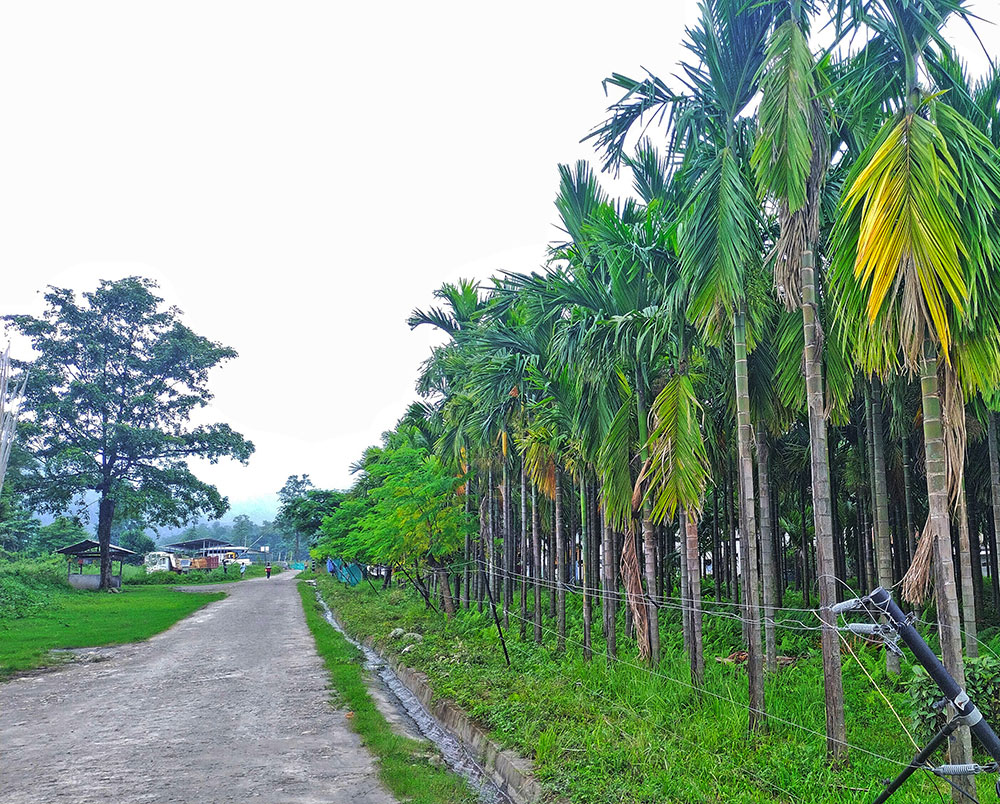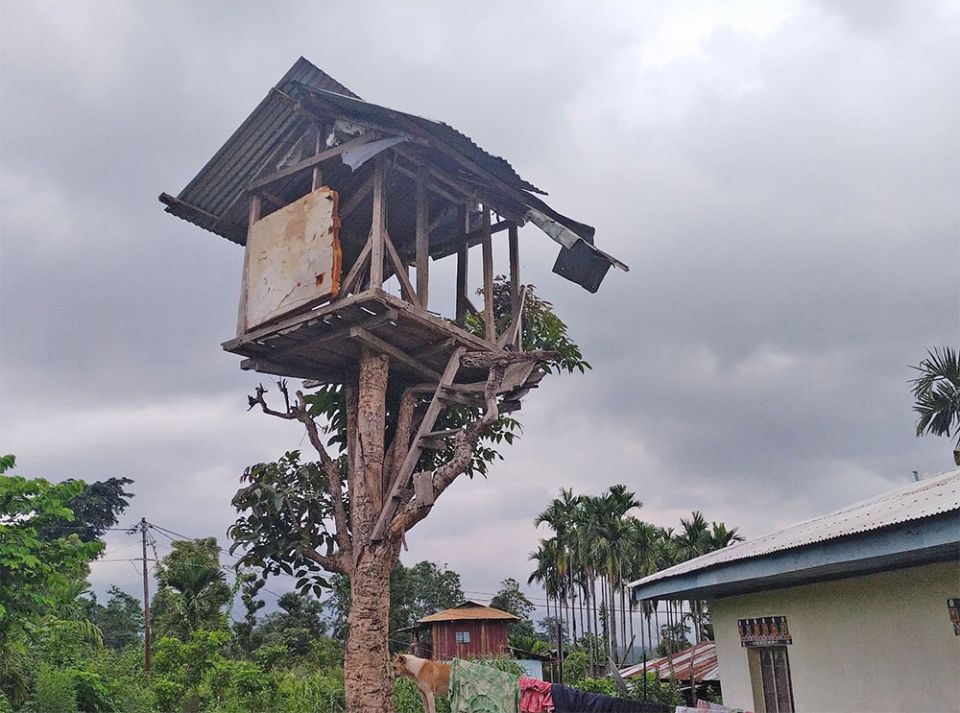
Samrang gewog transforms into elephant-friendly village
Neten Dorji
Samrang—Not long ago, farmers in Samrang, Samdrupjongkhar, used to stay up all night, lit fires or shout at the top of their voice to scare away elephants threatening their crops.
Those difficult days are gone now. Farmers have found a solution to live with the pachyderms.
If solar-powered fences are helping them, restoring elephant habitats, constructing waterholes in the forest, saltlick sites, and fodder grass for the elephants to feed on had helped keep the elephants at bay.

A tree house to guard to watch for elephant at night
Following the initiative, Samrang has turned into, what villagers call, an ‘elephant friendly village’. The gewog, located near the Indo-Bhutan border, is known to be the capital of elephants, indicating the risk to crops and even lives.
Like in many rural settlements in southern Bhutan, human-wildlife conflict, especially wild elephant attacks, were rampant in Samrang. Before the local solutions to the problem, elephants often came into the village, damaged homes and crops and even attacked people. Residents recall spending sleepless nights guarding their crops and homes until the government and Jomotshangkha Wildlife Sanctuary supported the village with approximately 10 kilometers of electric-fencing.
Bhata Bdr Rai, 72, recalls how elephants encroached on his fields and damaged the entire crops in a single night. “Scared that the elephants would cause serious damages to property and lives, people abandoned their houses and land,” he said, adding that no technique helped to keep the wild animals at bay.
Another farmer, Pithy Man Rai, said that with the help of the electric fencing, the elephants slowly stopped encroaching into their fields. The harvest increased as more land was reclaimed.
He said that the population also grew in the following years, with more people getting into mass areca nut plantation and farming.
“After the installation of solar fencing, we could grow more crops. Farming groups are also on the rise as they can reap the benefits of their hard work.”
Farmers said that even with forest officials, police and villagers, it was difficult to ward off the elephants in the past.
Farmers believe that poaching and destruction of elephant habitat across the border force the animals to seek refuge in their land. The elephants came in herds, sometimes six in a herd.
Building barriers such as electric fences, monitoring the elephants to understand their habitat preferences and migratory habits, or implementing habitat improvement initiatives such as digging waterholes and enriching fodder have been effective in the gewog.
Samrang Gup Jigme Singye Drukpa said electric fencing is effective in the gewog and most of the people started semi commercial farming.
“The temporary sheds have been replaced with concrete structures, and the population in the gewog has also grown, with more people engaging in ginger plantations.”












